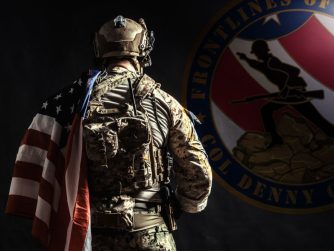Following WWII, the US moved quickly to demobilize the vast military it had constructed during the conflict. By 1948, less than 550,000 men remained in the Army. Relations between the Russians and Americans deteriorated rapidly. In 1947, the president issued the Truman Doctrine, which provided aid to Greece and Turkey to oppose communist subversion. In that same year, Secretary of State George Marshall warned that Western Europe was on the brink of political and economic chaos that would leave it defenseless against communist aggression. Congress approved billions of dollars in financial assistance to the beleaguered nations. In June 1948, the Soviets cut all land traffic into the US-British-French zones of occupation in West Berlin. The US responded with the Berlin Airlift, in which tons of food and supplies were flown in to sustain the population of the besieged city. Many believed that actual combat with the Soviet Union was not far away. In response to this threat, President Truman announced on July 20, 1948, that we were re-instituting the draft; nearly 10 million men registered in the next two months.
Truman’s decision underlined the urgency of his concern about a possible military confrontation with the Soviet Union. It also brought home to the American people in concrete terms the possibility that the Cold War could, at any moment, become an actual war. In 1950, possibility turned to reality when we entered the Korean War, and the size of America’s armed forces once again increased dramatically.
The US needs a draft now; we’re at war. Our all-voluntary military is both very good and very worn out. Back to back to back deployments have hurt the few Americans who care enough to defend her; a draft will solve that. A draft will also help solve a much more dangerous American issue: Most Americans have no clue that with our rights as a citizen come obligations.



